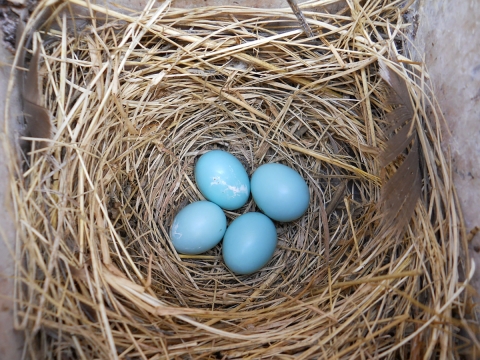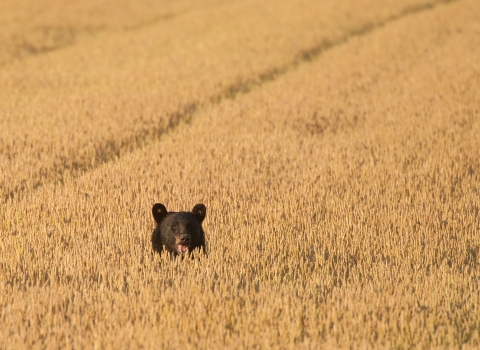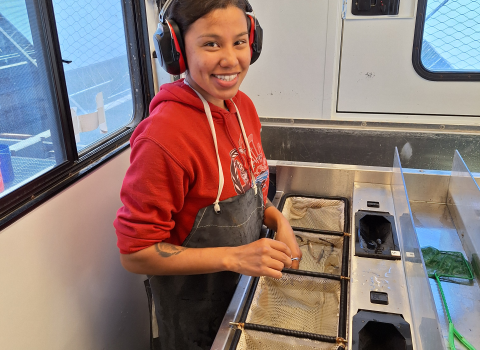If you pay careful attention to the birds this time of year, you may notice that some are carrying nesting material. Nests vary greatly across the country and different bird species have a number of unique techniques for building their perfect home to raise their young.
Birds can pick the strangest places to nest, like in gutters, kitchen fan vents, or even right near a front door. While many birds rely on nest cavities or build elaborate structures, it’s a good reminder to be on the lookout. Depending on where you live, knowing when and where local birds assemble nests can be a great way to help them this season.
Here are just a few facts about nests from some of our beloved bird species:
Bald eagles build strong nests and use them year after year. They make improvements and add to the nest, it can weigh over a ton! The largest eagle nest was 20 feet deep and estimated to weigh 2 tons! Check out the nest on our eagle cam and watch them raise their chicks.
Some birds will use abandoned homes from other animals. Burrowing owls have been known to use abandoned prairie dog burrows to raise young. Unlike eagles, great horned owls reuse nests built by other species and don’t make any improvements before moving in. It’s not unusual for their nests to collapse.
Blue-gray gnatcatchers makes their nests out of spiderwebs and lichen -- and they didn’t even take basket weaving in college!
Ruby-throated hummingbirds have nests about the size of a thimble.Red-cockaded woodpecker nest in cavities that can take years to construct in a living tree. They live in groups and will have as many as four helpers.
Gyrfalcons can use their nests for generations -- one was discovered to be over 2,500 years old. They use rocky ledges or old raven nests.
Piping plovers make shallow depressions on the beach with a few twigs. Despite the lack of coverage, their nests can still be hard to spot because they are so well-camouflaged.
A number of species, including the gadwall, line the sides of their nest with feathers. We see why down works so well in our jackets!
- Not all birds make nests! So remember, just because you find an egg doesn’t mean you should move it.
What should you do if you find a bird nest?
Admire it from afar!
Many bird nests are protected by law this time of year, because they are considered “active”. Tampering with an active nest is against the law. An active nest is any nest where there are birds or eggs present. If you have a special situation where you must move the nest, you can apply for a permit but these are issued under very limited circumstances.
Some other interesting legal facts about bird nests? Bald and Golden eagle nests are always protected even when unoccupied. And it’s actually important that you get a permit to keep an unoccupied nest for educational purposes.
By maintaining a respectful distance from the bird nests, we can help ensure that the birds will not be sensitive to disturbance since if they feel threatened they may even abandon young. We certainly don’t want to detract from the incubation process and we don’t want to interfere with them in their home.
This story is part of our Open Spaces blog.




